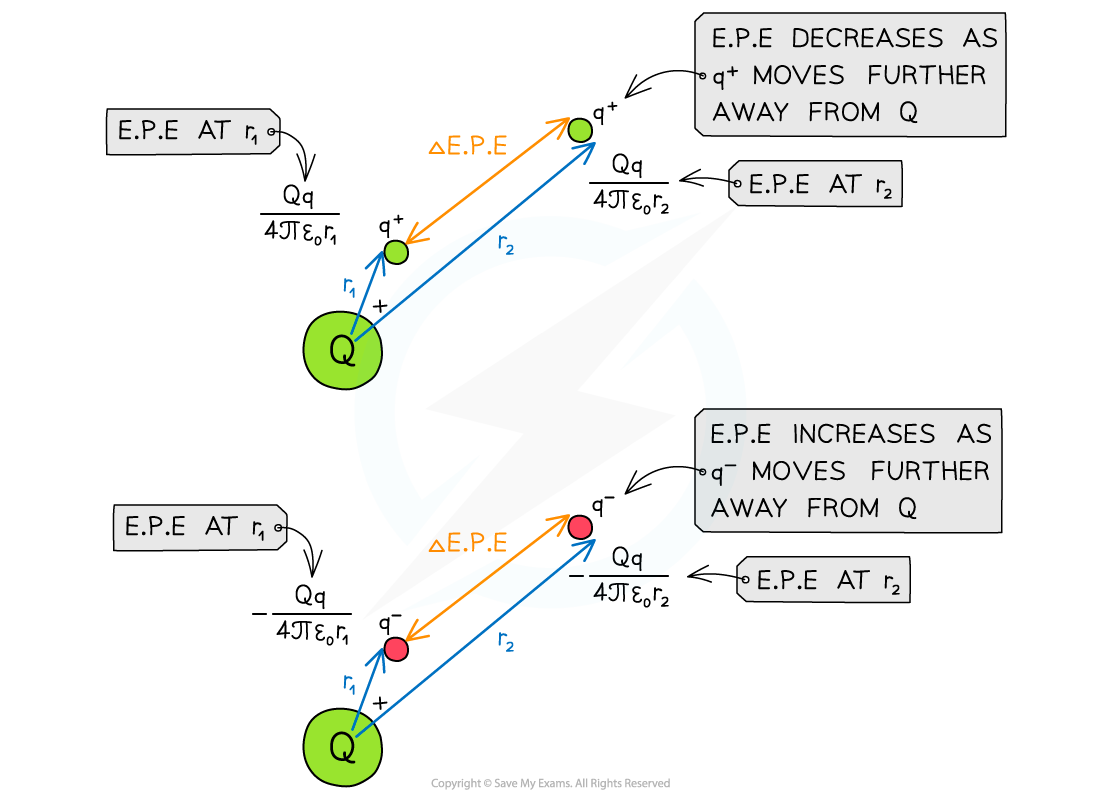Electric Potential Energy (OCR A Level Physics): Revision Note
Exam code: H556
Electric Potential Energy
When a mass with charge moves through an electric field, work is done
The work done in moving a charge q is given by:
∆W = q∆V
Where:
∆W = change in work done (J)
q = charge (C)
∆V = change in electric potential (J C−1)
This change in work done is equal to the change in electric potential energy (E.P.E)
When V = 0, then the E.P.E = 0
The change in E.P.E, or work done, for a point charge q at a distance r1 from the centre of a larger charge Q, to a distance of r2 further away can be written as:

Where:
Q = charge that is producing the electric field (C)
q = charge that is moving in the electric field (C)
r1 = first distance of q from the centre of Q (m)
r2 = second distance of q from the centre of Q (m)

Work is done when moving a point charge away from another charge
Work is done when a positive charge in an electric field moves against the electric field lines or when a negative charge moves with the electric field lines
Worked Example
The potentials at points R and S due to the +7.0 nC charge are 675 V and 850 V respectively.
Calculate how much work is done when a +3.0 nC charge is moved from R to S.
Answer:
Step 1: Write down the known quantities
p.d. at R, V1 = 675 V
p.d. at S, V2 = 850 V
Charge, q = +3.0 nC = +3.0 × 10−9 C
Step 2: Write down the work done equation
W = qΔV
Step 3: Substitute in the values into the equation
W = (3.0 × 10-9) × (850 - 675) = 5.3 × 10−7 J
Examiner Tips and Tricks
Remember that q in the work done equation is the charge that is being moved, whilst Q is the charge which is producing the potential. Make sure not to get these two mixed up, as both could be given in the question (like the worked example) and you will be expected to choose the correct one.

Unlock more, it's free!
Did this page help you?